Scheme of a two-pipe heating system: options
What could be the scheme of a two-pipe heating system in a private or multi-family house? How does the launch of such a system? What auxiliary equipment, besides pipes and heating devices, is necessary for its work? Let's try to answer these questions.

What it is
To begin with, we will try to explain in simplest terms the difference between one-pipe and two-pipe diagrams for connecting heating devices.
Imagine a pair of heating racks circling on the top floor of the adjacent rooms. One of them - the server, the second - the reverse.
So: if a radiator installed on each floor opens the riser to which it is connected, we can say that we have a single-pipe heating system circuit. But if each battery is a jumper between the risers - this is a two-pipe heating circuit.
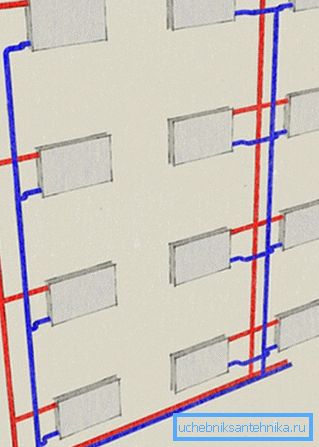
And now we will add a bit of confusion to these slender logical constructions.
In its pure form, these systems can be found only in private houses of a small number of floors and square.
More often, combined schemes like the following are used:
- The two bottoms passing through the basement are connected by the same risers on the upper floor, which fit into the description of the two-pipe system.
- However, each individual riser - one-pipe. The construction described above with radiators-lintels in a real apartment building will be inoperable: the coolant simply will not rise to the upper floor, moving only through one or two lower lintels.
To clarify: as we will find out later, the problem is solved by balancing - throttling of heating devices. However, in apartment buildings chokes, leaving at least one of the provisions leaving the neighboring apartments without heating, cannot be used at all. Just because any system should have the maximum protection against um, bright representatives of the intellectual majority.
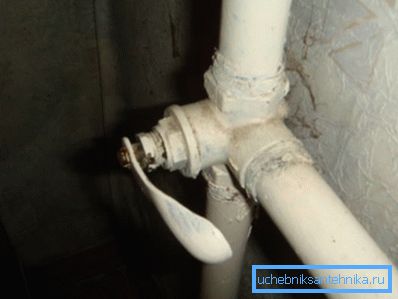
Classification
So, what kind of two-pipe heating system schemes can be found in the domestic utilities and private housing construction?
By orientation
In the vertical system, both pipes - flow and return flow are arranged vertically. In the horizontal, respectively, the opposite. And these schemes are often combined within the same house: for example, bottling with riser-bridges can form a horizontal system, and access heating - vertical.
In the course of the coolant
In the following scheme, the coolant moves in one direction along both bottling; in a dead-end - changes the direction of the movement to the opposite when moving from feed to return. A typical example of an associated scheme is a two-pipe heating system of a private one-story house, whose windows and doors do not interfere with the laying of pipes; but if there are obstacles, dead end is used.
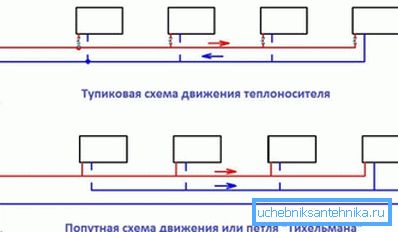
By prompting the movement of the coolant
- In apartment buildings, the heat carrier (process water) is driven by the pressure differential between the supply and return pipes of the heating main.
- A typical solution for a large private house is one or more circulating pumps.
- Finally, in a small area of the house, the circulation can be ensured by the difference in density between the hot and heat-discharged air masses of water. The heat source becomes a boiler or furnace with a heat exchanger.
Top and bottom bottling
Most modern new buildings - the houses of the lower bottling: the supply and return pipelines are located in the basement or in the technical attic above the ground floor occupied by stores or warehouses.
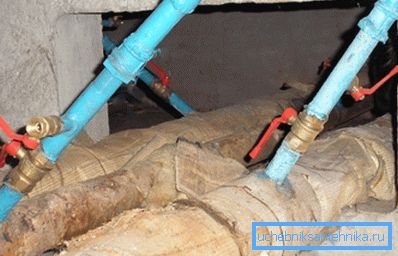
The convenience of such a scheme is that all valves and fittings are concentrated in one place: to reset the heating riser, it is enough to shut off two valves located next to each other and unscrew a pair of plugs. The main drawback is the laborious launch after a reset: in order to remove the airlock, you need to get to the top apartment on the riser.
There are, however, a couple of nuances.
- If there are no heating devices on one of the risers, it can be reloaded from the basement together with the steam room. For this purpose, a drain valve is installed instead of a plug. It is enough to screw the plug on the second riser and open the valve on it, leaving the relief valve open - and the air will fly out on the water flow front.
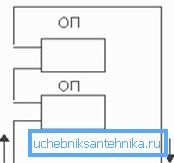
- In some houses, lintels with Mayevsky's cranes are in the attic. To start you do not need to get into the apartments of the upper floor; however, in severe frosts, the water often freezes when frozen in jumpers.
Two-pipe heating schemes with top filling differ in that the supply is in the attic; the heat carrier passes the risers open by radiators on the way to the return pipe located in the basement. An expansion tank with an air vent is installed at the top of the filling point.
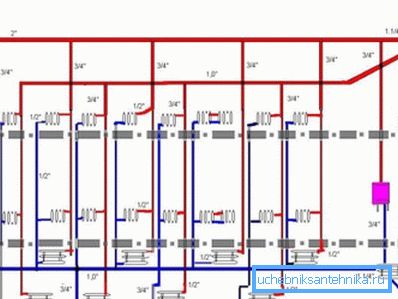
What is the result?
- When dumping, the water does not freeze either in the bottling or in the risers - just open the vent in the attic.
- Starting the system is simple and safe: all the air is in the expansion tank.
The price of a simple reset and launch is the need to run when the riser is disconnected: it has to be blocked from below and from above.
Balancing
The horizontal two-pipe circuit in its original form is inoperable: the coolant circulates only through heating devices closest to the boiler or pump. The problem is solved by balancing - throttling each battery to get the same temperature.
Note: due to the inertia of the system, stabilization of the coolant temperature takes several hours. Hence, an obvious instruction: with self-balancing, the position of each choke changes to a minimum value with repeated control of temperatures in 2-4 hours.
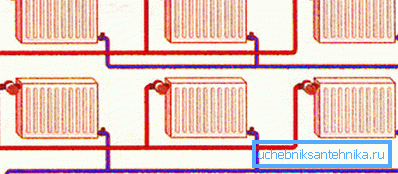
Equipment
When building a system in a private house, you will need a certain amount of additional equipment besides pipes and valves. With the functions of some of its species, we will briefly meet.
| Type of equipment | Short description |
| Expansion tank | The capacity compensating expansion of the heat carrier when heating. A closed tank is taken equal to 10% of the volume of coolant and is mounted after the circulation pump. An open tank is mounted at the top of the circuit. |
| Safety valve | Relieves excess pressure when the closed circuit overheats. |
| Automatic air vent | Removes air and gases from the circuit due to electrochemical processes. |
| Mayevsky's crane | Device for manual air bleeding. Mounted in the upper radiator plugs or at the top of each jumper between the risers. |
| Throttle | Analogue screw valve for manual adjustment of the cross. |
| Thermal head | Automatic choke, changing permeability depending on air temperature. |
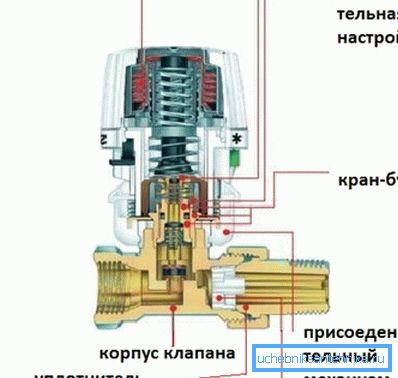
Conclusion
We hope that the information offered to the reader will be useful. As always, the video attached to the article will please it with additional thematic materials. Successes!